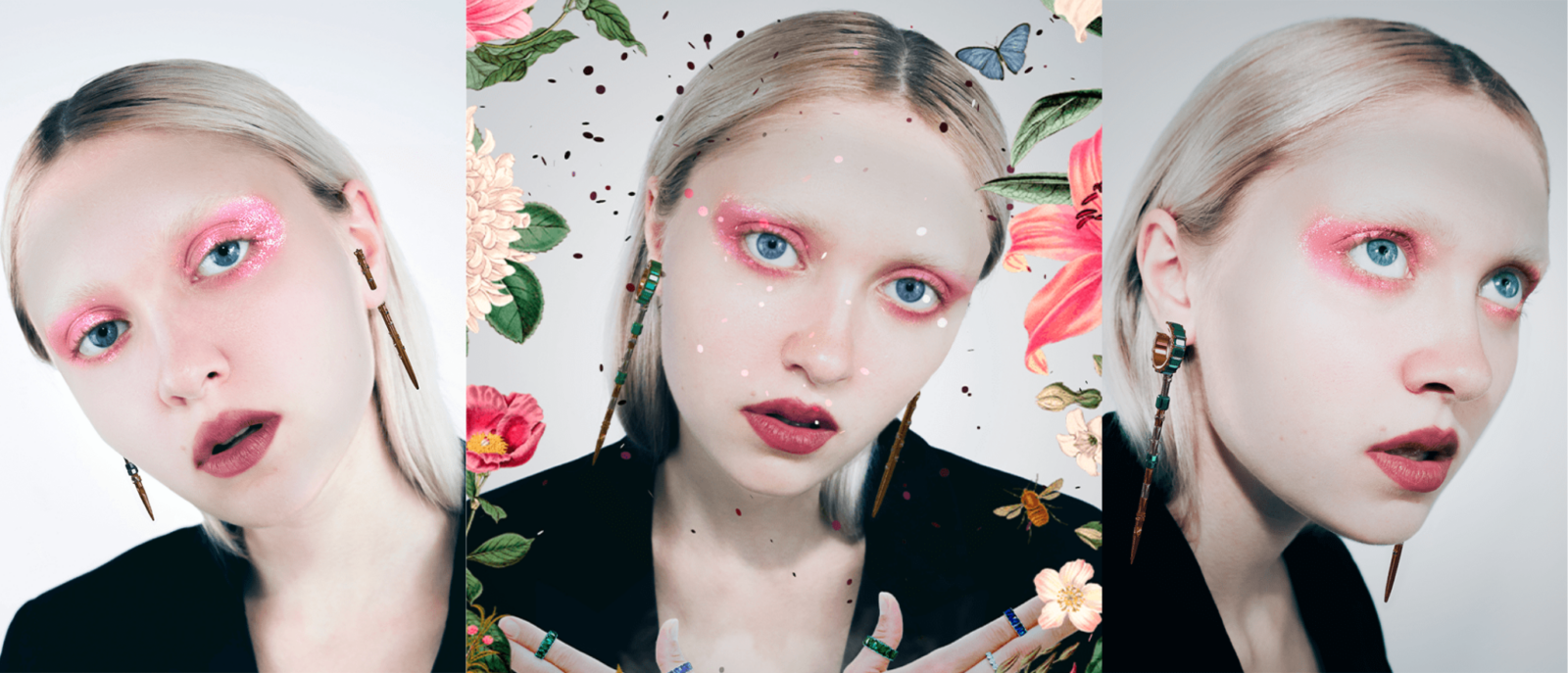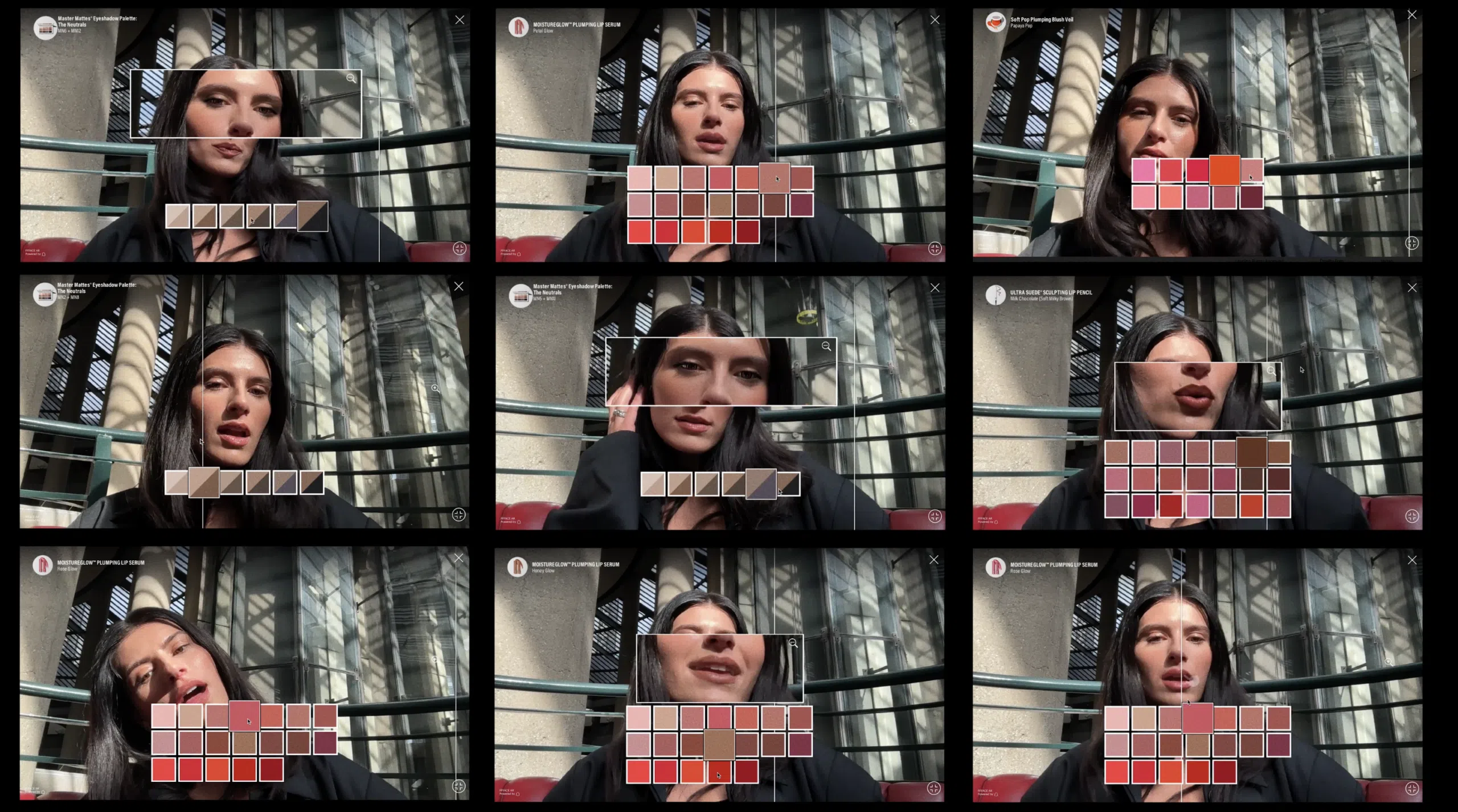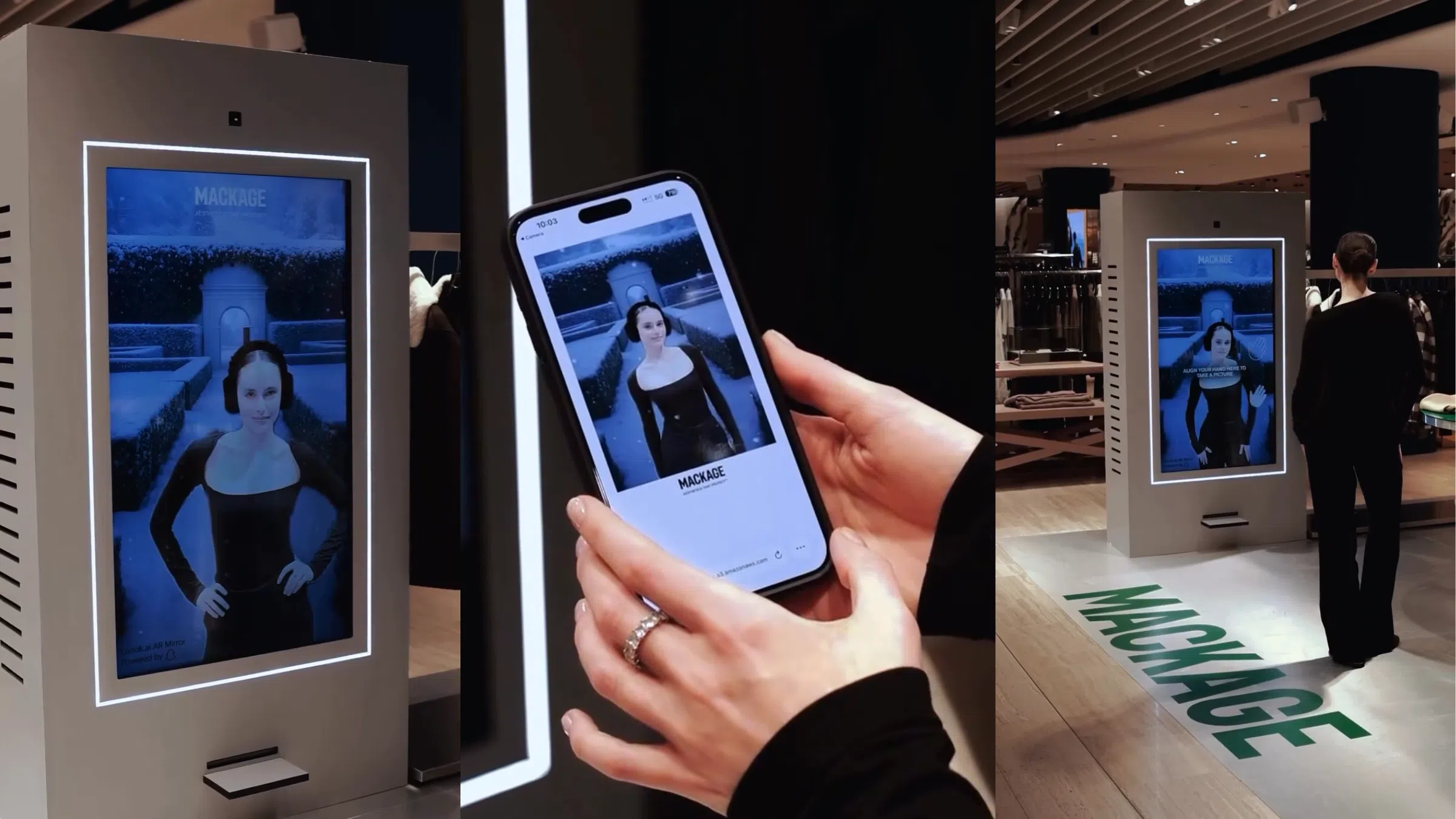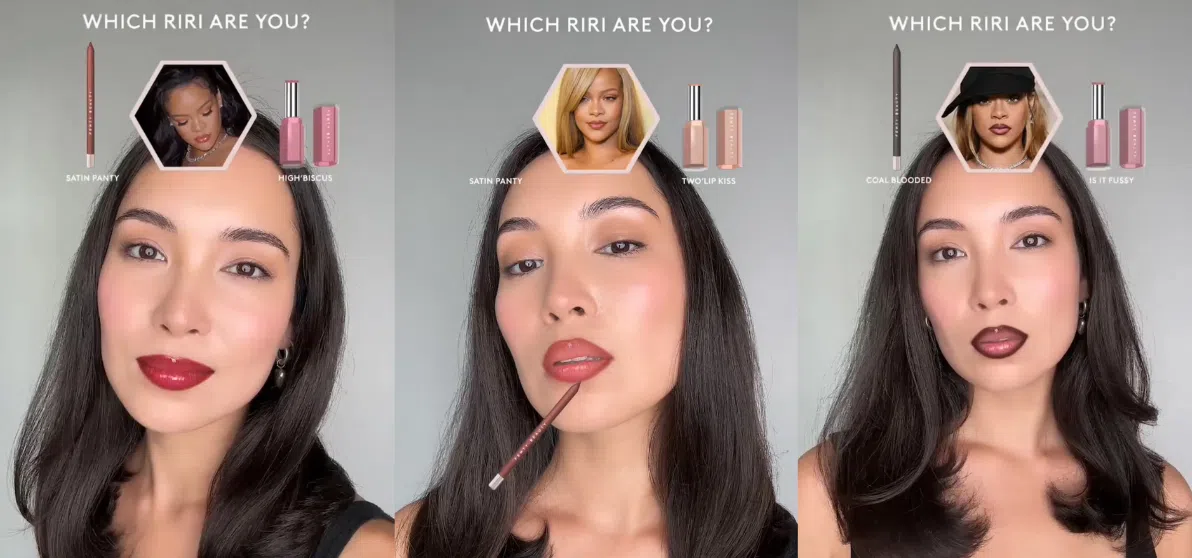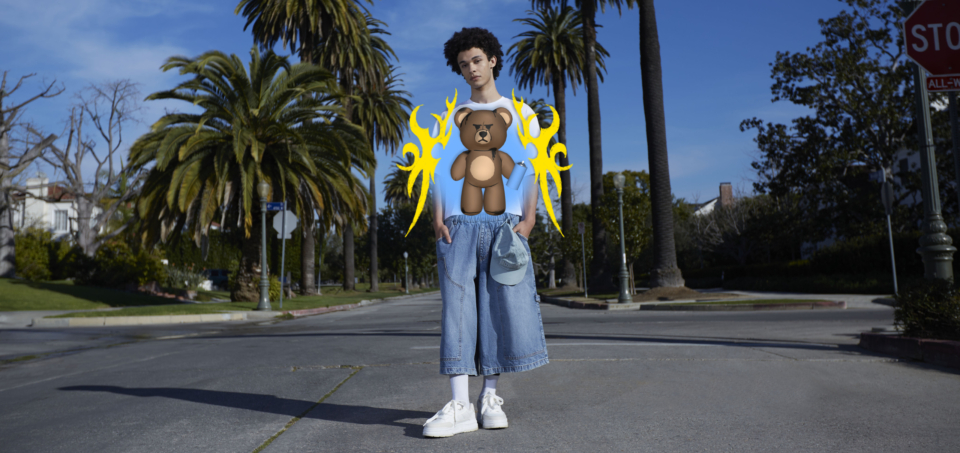AR Jewelry: The Power of Augmented Reality & Virtual Try-On in Jewelry Industry

TL;DR: AR Jewelry
AR virtual try-on is transforming the jewelry industry by allowing shoppers to preview rings, earrings, necklaces, bracelets, and watches in real-time through smartphones, WebAR links, and in-store AR mirrors. Powered by ultra-realistic 3D models and advanced face and hand tracking, AR enhances confidence during the buying journey, increases engagement and dwell time, reduces returns, and creates seamless digital-to-physical shopping experiences. Brands are already using AR across multiple touchpoints — from e-commerce try-on widgets and social media beauty-style filters that drive user-generated content, to in-store smart mirrors that let customers explore styles hands-free, to remote consultations and virtual showroom tools that expand product access without holding physical stock. Even phygital jewelry collections are emerging, where NFC-enabled pieces unlock AR effects and immersive storytelling. As luxury and fashion jewelry houses embrace AR to modernize the try-on journey, virtual try-on is quickly shifting from a novelty to a strategic must-have for brands aiming to boost conversions, elevate experience, and stand out in a competitive market.
What Is AR Jewelry?
AR Jewelry merges 3D digital models with real-world environments, enabling virtual try-ons through smartphones, tablets, or smart mirrors. Using precise body tracking, the technology maps jewelry onto users in real-time – rings move naturally with fingers, earrings adjust to face shape, and necklaces follow neckline movements.
This immersive shopping experience is crucial for jewelry purchases where fit and appearance matter most, particularly benefiting e-commerce where physical try-ons aren’t possible.
Major retailers like Swarovski, Tiffany & Co., and Pandora now use AR try-on to drive engagement and sales.
How AR Jewelry Works
AR jewelry try-on combines computer vision, AI, and real-time 3D rendering to create a seamless and interactive virtual fitting experience. Whether accessed through a smartphone, desktop webcam, or in-store AR mirror, the technology identifies key facial and hand landmarks—like ears, fingers, wrists, and neckline—and overlays high-fidelity digital models of jewelry that move naturally with the user. As users turn, tilt, or gesture, the jewelry adjusts dynamically, giving a realistic 360° preview from any angle.
Key Features of AR Jewelry Try-On:
- WebAR or SDK Integration: Brands can integrate AR try-ons directly into their websites using WebAR frameworks. No app download is needed—just tap and try in the browser.
- Face & Hand Tracking: Advanced AI tracks facial features and finger joints to accurately place jewelry on ears, fingers, neck, or nose.
- 3D Product Modeling: Each jewelry piece is scanned or modeled in 3D, optimized for real-time rendering while maintaining high realism and shine.
- Cross-Platform Compatibility: Works seamlessly on iOS, Android, and most modern browsers and devices, ensuring maximum reach.
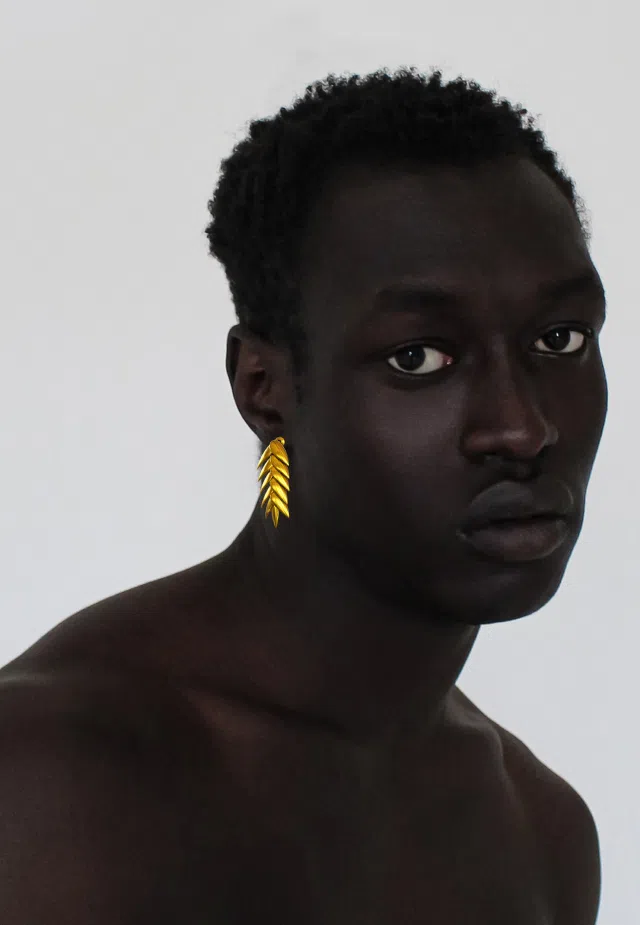

Augmented Reality Use Cases in the Jewelry Industry
Augmented Reality is no longer a futuristic trend—it’s a practical, proven tool that is reshaping how customers discover, try, and purchase jewelry. Here are the most impactful use cases for AR in the jewelry space, and how they create value across the customer journey:
Virtual Try-Ons (Anywhere, Anytime)
Augmented Reality brings the jewelry showroom directly to the customer—no matter where they are. Through AR-enabled mobile websites, e-commerce platforms, apps, or social media filters, users can instantly try on rings, earrings, necklaces, bracelets, and even nose studs in real time using their smartphone or desktop camera. The technology combines real-time face and hand tracking with high-quality 3D models to deliver lifelike, responsive virtual try-ons.
For businesses, AR jewelry try-ons drive higher conversion rates by helping customers make confident decisions. They also lower return rates, as shoppers get a clear, accurate preview of how items will look and fit. The experience boosts engagement, encourages exploration, and keeps users on-site longer. It also supports an omnichannel strategy, allowing brands to unify digital and physical touchpoints while gaining valuable data on customer behavior and product interest.
In-Store AR Smart Mirror Integration
AR mirrors transform the in-store shopping experience by blending physical presence with digital convenience. Using high-resolution cameras and real-time computer vision, these mirrors overlay 3D jewelry onto a customer’s reflection—rings, earrings, necklaces, and more—without the need to try on physical items. The jewelry adjusts naturally as the user moves, offering a realistic and immersive preview.
Customers can explore styles using gestures or touchscreen, compare pieces side by side, and even capture photos or send previews to their phones. Some systems integrate with loyalty programs for personalized recommendations or saved favorites, creating a seamless omnichannel journey.
Customer Flow:
- Customer stands in front of the mirror.
- Camera auto-scans face and hands.
- Jewelry options appear on screen.
- User browses and selects pieces via gestures or touch.
- Virtual jewelry appears and tracks real movement.
- Option to compare, save, or share looks.
- Personalized suggestions and purchase links appear.

loook.ai transforms any screen into an AR/AI-powered smart mirror, photobooth, or digital storefront—boosting engagement, foot traffic, and sales
AR Filters for Social Media Campaigns
AR filters on TikTok, Instagram, and Snapchat let users virtually try on jewelry and share their look—making them instant brand ambassadors. These filters blend try-on tech with social engagement, turning product discovery into playful, shareable content that boosts awareness and drives sales.
Jewelry brands can launch filters for new collections, seasonal promos, or influencer collabs, with built-in CTAs linking directly to e-commerce. Filters are easy to use, viral-ready, and perfect for reaching digital-native audiences.
Why It Works:
- Turns users into content creators with branded UGC
- Perfect for influencer campaigns and paid partnerships
- Built-in tracking: views, shares, click-throughs
- Drives traffic to product pages via strong CTA links
- High engagement at low production cost
Example: Just like Maybelline and Prada in the beauty space, jewelry brands are now leveraging AR filters to create buzz, boost reach, and make their pieces go viral.
AI-powered Try-on Experiences for Jewelry Websites
At FFFACE, we’ve developed an advanced AI + AR solution tailored specifically for jewelry brands looking to create truly personalized, immersive shopping experiences—both online and in-store.
AI algorithms analyze key visual inputs—like face shape, skin tone, and even hand proportions—using computer vision and machine learning. This data is matched with product metadata (style, color, size, material) to recommend the most flattering pieces, which are then instantly visualized in real time through AR overlays.
For example, facial analysis models classify face geometry to suggest shapes that balance or enhance features, while skin tone detection adjusts metal and gemstone recommendations to complement the user’s complexion. The AR engine then renders the selected items on the user using real-time tracking, ensuring accurate scale, alignment, and motion response.
This personalized experience can be deployed across mobile apps, WebAR interfaces, and in-store AR mirrors. It supports features like saved preferences, style quizzes, and purchase history-based recommendations, offering a seamless and intelligent shopping journey.
AI + AR can now be combined to offer tailored suggestions based on face shape, skin tone, and style preferences. For example:
- A customer with a round face may be shown drop AR earrings that elongate the look
- A warm-toned skin tone may be matched with yellow gold or rose gold pieces
- Shoppers can preview full curated sets for special occasions like weddings or gifting
Together, AI + AR deliver a concierge-like service—at scale—boosting engagement, confidence, and conversions.
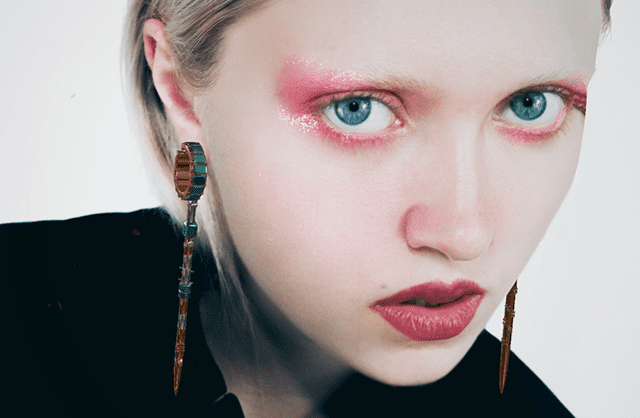
Why Brands Are Investing in AR Jewelry
Jewelry has always been a highly emotional and sensory-driven purchase. Customers want to feel connected to the pieces they wear—whether it’s a diamond engagement ring or a bold fashion accessory. But in an increasingly digital-first world, brands face a growing challenge: how to recreate the intimacy of the in-store experience online and across digital touchpoints.
This is where Augmented Reality (AR) steps in—not as a replacement for physical retail, but as a powerful enhancement. AR jewelry transforms static product listings and traditional displays into dynamic, interactive experiences that blend function, emotion, and immersion.
Here’s why more forward-thinking brands are embracing it:
Boost Conversions with Confidence
One of the biggest barriers to online jewelry sales is hesitation. Customers often need to see how a piece fits, shines, or complements their style before clicking “Buy.” AR try-ons solve this friction point by allowing users to virtually try on rings, earrings, bracelets, or necklaces in real time, from any device.
The result?
- Higher conversion rates thanks to better purchase confidence
- Lower return rates due to clearer expectations of sizing, fit, and style
- Faster decision-making that moves shoppers from curiosity to checkout
Brands integrating AR on product pages have reported double-digit increases in conversion rates—especially for high-ticket and customizable items.
Elevate the Customer Experience
Today’s consumers expect more than product—they want experiences. AR brings that to life by making jewelry discovery fun, engaging, and memorable. Whether it’s through a mobile try-on, an in-store smart mirror, or an interactive filter, AR keeps customers actively involved in the shopping journey.
For Gen Z and Millennials, who grew up on Snapchat lenses and TikTok filters, AR isn’t a novelty—it’s native. Brands that meet them where they are (visually, socially, digitally) create stronger emotional resonance and long-term loyalty.
Offer Jewelry Try-Ons with AR MirrorDrive Social Sharing & Organic Reach
AR jewelry experiences are highly shareable—especially when paired with platforms like Instagram, TikTok, or Snapchat. Imagine a shopper trying on a signature ring or statement earrings via AR, adding a sparkle effect or branded animation, and posting it to their Story or Reels.
This doesn’t just amplify reach—it transforms your audience into brand advocates.
Benefits include:
- Increased earned media value through UGC (user-generated content)
- More brand visibility on social platforms
- A fun, low-pressure entry point for new and younger customers
Some brands have even turned AR filters into viral product launches—reaching millions before a single product hits the shelves.
Offer Personalization at Scale
AR isn’t just a display tool—it’s a powerful engine for hyper-personalization. Try-on filters can adapt to each user’s face shape, skin tone, or outfit. Smart mirrors can recommend pieces based on preferences or previous interactions. And NFC-enabled jewelry can let buyers embed memories, love notes, or digital certificates right into the piece.
This level of personalization gives customers something priceless: a sense of ownership and emotional connection.
At scale, it also allows brands to:
- Tailor experiences by region, season, or campaign
- Offer real-time customization previews
- Build deeper customer profiles and loyalty through data
The Strategic Edge
AR jewelry is more than a tech feature—it’s a brand experience accelerator. It solves real business challenges while delivering tangible benefits in engagement, conversion, and customer satisfaction. For brands that want to stay relevant, differentiated, and digitally agile, AR is no longer optional—it’s essential.


Beyond Try-Ons: NFC-Enabled Smart Jewelry
NFC-enabled jewelry integrates Near Field Communication chips into physical pieces—like rings, necklaces, or earrings—turning them into interactive digital touchpoints. When tapped against a smartphone, these accessories unlock a wide range of personalized experiences.
The NFC chip, discreetly embedded inside the jewelry, stores and transmits data when in proximity to an NFC-enabled device. It creates a seamless blend of physical beauty and digital interactivity, without requiring any app downloads.
Key Features & Experiences:
- Launch AR animations tied to specific products or campaigns
- Access personal content like video messages, photos, or voice notes
- Authenticate the item with embedded certificates of ownership or provenance
- Connect to digital assets such as NFTs, brand loyalty programs, or exclusive collections
For modern brands this is more than a tech upgrade—it’s a move into phygital storytelling. NFC-enabled jewelry allows brands to create emotional, high-value connections with consumers while driving engagement, loyalty, and authenticity in both physical and digital spaces.
FFFACE: Your Turnkey AR Jewelry Partner
You don’t need to build complex tech from scratch—FFFACE delivers ready-to-deploy, high-impact AR solutions tailored for the jewelry industry. Whether you’re a luxury house, DTC brand, or retail chain, we help you create seamless virtual try-on experiences across every customer touchpoint.
From concept to launch, FFFACE provides plug-and-play tools and custom activations that elevate your e-commerce, retail, or campaign presence with best-in-class AR technology.
Whether you’re looking to boost online conversions, reduce product returns, or create a memorable brand experience, FFFACE delivers scalable, beautiful, and engaging AR solutions that make your jewelry truly unforgettable.
Bring the Future of Jewelry Retail to Your StoreFinal Thoughts
AR Jewelry isn’t just about seeing a ring on your hand—it’s about creating a digital-first emotional connection with customers. Whether through virtual try-ons or NFC-activated storytelling, this is your chance to lead the industry in innovation, personalization, and engagement.
Now is the time to reimagine jewelry as more than adornment—it’s interactive, intelligent, and unforgettable.




